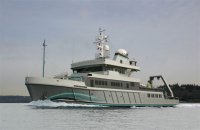View attachment 18466
I have an upcoming shoot on this vessel, 3 weeks at sea. Please take a look at that radio stack on board, and tell me what issues I should be aware of in terms of potential interference, what precautions should I take, what shall I make the bridge turn off during flight ops (radar ? etc), and am I crazy to fly my $30k bird daily over the water. I believe salt water itself can also effect radio signal? Shall I limit my range? Limit proximity to the sea surface? Any thought, expertise in this area from you guys is much appreciated. Obviously home base is a moving target, so attitude mode only.
Getting a bit nervous...
I have an upcoming shoot on this vessel, 3 weeks at sea. Please take a look at that radio stack on board, and tell me what issues I should be aware of in terms of potential interference, what precautions should I take, what shall I make the bridge turn off during flight ops (radar ? etc), and am I crazy to fly my $30k bird daily over the water. I believe salt water itself can also effect radio signal? Shall I limit my range? Limit proximity to the sea surface? Any thought, expertise in this area from you guys is much appreciated. Obviously home base is a moving target, so attitude mode only.
Getting a bit nervous...


